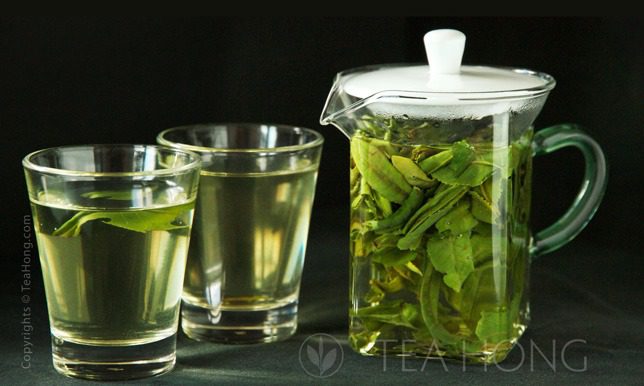Different teas, different infusion approaches
As much as a diamond would sparkle less when cut like a jade, different tea preparation techniques and parameters suit different teas. Although there is a standard in tea preparation for professional tasting, there are many ways to bring out the best taste and aroma of a tea for a true connoisseur. Infusion approaches, as we like to call these skills, are part of the enjoyment of fine teas.
That is why in the tea groupings under Selection by Taste, we have used pictures of raw gems. While the rocks need to be skillfully cut to shine, a fine tea has to be well prepared to reveal its best taste. Teas are like raw gems, in this respect.
Infusion: it’s a matter of balance
Infusion is an art to extract a BALANCE of the various substances from a particular batch of tealeaves into water so as to obtain an enjoyable cup.
For example, the famous green tea Luan Guapian tastes refreshingly pleasant when infused at 85°C (185°F) for 3 minutes in a 150 ml gaiwan with 3 grams of the leaves. With that method, our Menghai Spring, a classic matured pu’er can hardly show any of its sweet full body and deep earthy aroma, but turns coarse, muddled and chalky. It shows the best of its charm only when infused with boiling water in a small Yixing teapot using double more tealeaves but one third of the time.*
Working with the material nature of tea
Both the physical and biochemical natures vary amongst different varieties of tea, as well as between different quality grades within the same variety. In the green tea and pu’er examples, it is majorly a balance of the various tea catechins, amino acids, and pectin in the case for Luan Guapin, and that of the various carbohydrates and polymerized tea flavonoids for Menghai Spring. And there is the decisive factor of releasing the volatile oils that constitute the aroma of the tea.
The subjective decision of the person who prepare the tea determines what balance of aroma, bitterness, astringency, sweetness, umami (tastiness), brightness, sourness and tactility extractable from the same few grams of tealeaves. Infusing this balance into the liquor and liberating the aroma is achieved largely through these variables:
- Tea to water ratio
- Water temperature
- Duration of infusion
- Timing and manner of how the tealeaves are heated
- Rate and manner of heat loss during infusion
- Rate and manner of liquid movement within the container of infusion
If this does not read like English, basically it is the use of water temperature, decision of tealeaves amount, and choice of teaware in combination with how you throw the tealeaves and pour the water.
Mindfulness
On that last note, the quality of water and how it is heated can affect the infusion result quite dramatically. A safe rule is never to use water with lots of mineral contents and always use freshly heated water.
Practice improves skills. Mindfulness discovers quality.
Mastering infusion skills, after all, is slightly easier than mastering the cutting of precious stones.
Sanskrit for the expression of “Mindfulness”
*Note: The parameters given in these two examples are based on general preference. Individuals may need to adjust them according to personal sensitivities to various taste and olfactory elements.
Related article: Product description: Taste profileRead about infusion in the Tea Guardian:
Infusion: Basic Techniques
Tea Tasting: a Step by Step Guide




